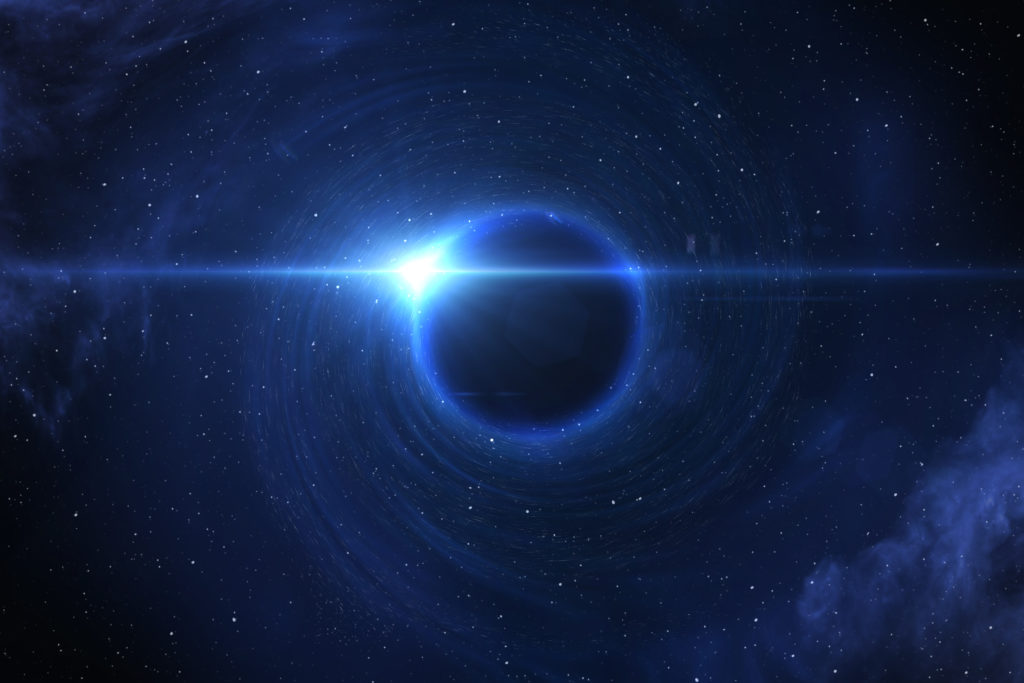It’s Time To Celebrate Black Holes!

Imagine a star dies in a supernova explosion. As it does, it collapses and sucks all the matter into a super small hole. It also sucks all surrounding light in, so you can’t see it. This is what astronomers call a “black hole.”
Only really big stars with super-large masses can become black holes. Smaller stars, like our sun, will simply become dense “neutron” stars when they die.
Black holes are far from empty. Rather, a black hole is a tiny space packed with an enormous amount of matter. This creates a gravitational force so powerful nothing can escape it.
You may be wondering: if we can’t see black holes, how do we know they exist? Scientists know black holes exist because their gravitational fields affect everything around them. So we know they are there, even if we can’t see them.
The first suspected black hole was discovered in 1971, when astronomers observed that x-rays were coming from the direction of a blue star spinning around an invisible object. The astronomers thought the x-rays were created by pieces of the star getting sucked into what was likely a black hole.
Black holes come in all different sizes. Some scientists believe the smallest could be as tiny as a single atom with the mass of a whole mountain. Others, known as “stellar mass” black holes, are 10-24 times the size of our sun. There are even bigger black holes called “supermassive” black holes that are millions and maybe even billions of times as large as the sun. Astronomers think every large galaxy has one.
What is Black Hole Friday?
Black Hole Friday is an effort by NASA to rebrand “Black Friday” — a discount shopping-spree day in the United States — as a day to celebrate black holes. It takes place each year on the last Friday of November.
Check out this video from NASA to learn more about black holes.
Learn more about aerospace with IEEE TryEngineering Tuesday! Explore, discover, inspire, and share today!






















